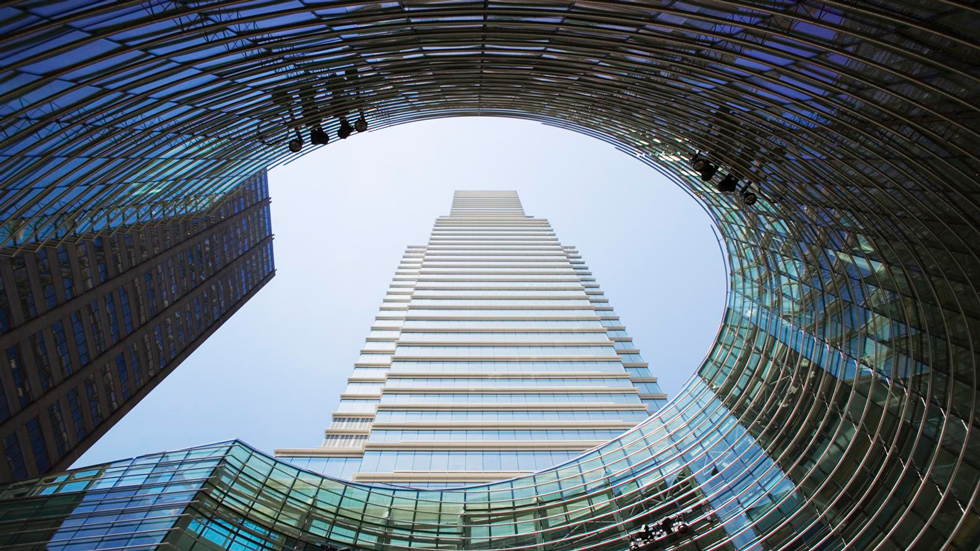For years, LEED and ENERGY STAR have been prominent in the ESG vernacular of the REIT industry, but another building certification program—Fitwel— has recently joined the club. But unlike LEED and ENERGY STAR , which focus on a building’s environmental and energy aspects, Fitwel zeroes in on how well a building promotes health and well-being.
Created by the U.S. Centers for Disease Control and Prevention (CDC) and the U.S. General Services Administration (GSA), Fitwel is operated by the nonprofit Center for Active Design in partnership with the CDC. The program was rolled out to the public in early 2017.
Today, more than 1,460 projects around the world have either achieved Fitwel certification or are in the process of gaining it, with 80% of certifications applying to existing structures and 20% to new construction. Office buildings hold more than half of Fitwel certifications, although the residential sector is gaining momentum. The U.S. makes up nearly 80% of Fitwel’s global market.
COVID-19 clearly accentuated the value of Fitwel. “When the pandemic first broke out, it brought to light what we’ve always known: Public health is at risk,” says Joanna Frank, president and CEO of the Center for Active Design. “As a result, occupants are demanding healthy buildings, not as a luxury but as their highest priority. This has had a dramatic impact on all sectors, with the residential sector seeing the most dramatic rise in demand.
Data-Backed Certification
Fitwel is a third-party certification system backed by data from more than 5,600 academic research studies. The system scores the presence of health and well-being features in the built environment.
Fitwel grades on a point scale, awarding more points to projects that demonstrate the highest levels of attainment. Fitwel’s scorecards include more than 55 evidence-based design and operational strategies that enhance buildings by addressing an array of health behaviors and risks. The type of scorecard depends on the type of project.
All projects are rated using a three-star system. Seven key health factors go into the scoring: health impact on the surrounding community; reduction of diseases and absenteeism; social equity for vulnerable populations; sense of well-being; access to healthy foods; occupant safety; and, physical activity.
Elements that can contribute to a higher score include tobacco-free indoor spaces, views of nature, fruit and vegetable gardens, covered and secured parking, and PPE and sanitation stations.
&Through a double-blind process, two independent reviewers assess each project and confirm a numerical score.
According to Fitwel, Los Angeles-based REIT Kilroy Realty Corporation (NYSE: KRC) holds the most of its certifications of any landlord. As of June 30, 42% of Kilroy’s office portfolio was Fitwel-certified. It’s aiming for 50% certification by the end of 2025. The REIT owns and operates more than 15 million square feet of space, primarily office buildings and life science facilities.
Frank says Fitwel certification validates data that REITs and other landlords publish in ESG reports.
“By adopting a common set of guidelines, the real estate industry can commit to better environmental initiatives to spark widespread change across the industry. This is a vital joint effort as we work to combat climate change, with the added benefit of making our communities healthier,” Frank says.
Staying Ahead of the Science
New York City- based Vornado Realty Trust (NYSE: VNO) was among the early adopters of Fitwel
Lauren Moss, senior vice president and chief sustainability officer at Vornado, says the REIT appreciates Fitwel’s evidence-based approach to health and well-being in the built environment, tying together elements such as indoor air quality, tenant satisfaction and retention, and employee absenteeism.
“We want to stay ahead of the science,” Moss says, “and I think that Fitwel has provided us with the basis to continue to make decisions beyond energy and carbon neutrality, and really look holistically at how we work with our tenants and our occupants."
A proprietary Vornado app helps tenants keep tabs on an array of building offerings, such as dining perks, safety alerts, and wellness activities.
In line with Vornado’s holistic sustainability goals, the REIT takes a broad view of incorporating Fitwel into its properties, Moss says. As such, Vornado embraces Fitwel’s program for certification of multitenant buildings, which the REIT helped develop. The program enables Vornado to not only examine its operations from a building and owner perspective, she says, but to collaborate with occupants on how to improve the health and well-being experience for workers and tenants.
Close to a quarter of Vornado’s office portfolio, or about 6.6 million square feet of space, is certified under Fitwel’s multitenant building program. In addition, the REIT’s entire office portfolio is certified through the pandemic-spawned Fitwel Viral Response Module (VRM) program. This program certifies buildings based on their ability to combat viral transmissions and protect occupants’ health and well-being.
One of Vornado’s highest-profile properties with general Fitwel certification is Manhattan’s 731 Lexington Avenue office tower. The building serves as the global headquarters of the Bloomberg media conglomerate. In 2018, Fitwel awarded the 1.3 million- square-foot, 56-story building a three-star rating, the highest available
Four years after the 731 Lexington certification, and two years after the onset of the pandemic and amid the continuing rise of ESG popularity, Fitwel is evolving into a must-have building standard along the lines of LEED, rather than a nice-to- have designation, according to Moss, a longtime Fitwel ambassador. Building health and wellness now appears on the radar of an increasing number of landlords, investors, tenants, and occupants.
An "Analog" to LEED
Los Angeles-based Hudson Pacific Properties, Inc. (NYSE: HPP) is among those landlords prioritizing health and wellness
Natalie Teear, senior vice president of innovation, sustainability and social impact at Hudson Pacific, echoes Moss’ observation. Hudson Pacific sees Fitwel as an “analog” to LEED certification, Teear says, and serves as shorthand for conveying that a building is “healthy.” Teear believes Fitwel offers “a really valuable tool” for independent verification of a property’s health, safety, and well-being features.
Well-being represents a newer frontier in what constitutes a “healthy” building, Teear says. Various facets fall into the well-being bucket. This includes ensuring there’s an abundance of natural light, which has been shown to boost mood, productivity, and intellectual performance. The notion of well-being also encompasses wellness activities, such as yoga, cycling, or meditation classes.
“We want people to like being in our buildings,” Teear says, “and to feel better when they’re there.” Around one-third of Hudson Pacific’s in-service office portfolio is Fitwel-certified; the REIT aims to reach the 50% mark by 2025. Hudson owns and operates more than 21 million square feet of space.
Amid a “flight to quality” in the office market, Fitwe
certification differentiates Hudson Pacific from some of its competitors, according to Teear./p>
“We do see tenants caring about health,” she says. “Sometimes it’s explicit questions about, ‘What’s your approach to indoor air quality?’ or ‘Do you have an on-site gym?’ And sometimes it’s more implicit in their overall search for new space.
Fitwel Today and Tomorrow
Teear thinks Fitwel will grow to become as common in Amid a ‘flight to quality’ in the office market, Fitwel certification differentiates Hudson Pacific. Natalie Teear, senior vice president of innovation, sustainability and social impact at Hudson Pacific commercial real estate as LEED and Energy Star certification are today. More than 80% of Hudson Pacific’s in-service portfolio is LEED-certified, while more than 70% is Energy Star-certified.
A new report elevates the usefulness of the certification program. The Center for Active Design, in collaboration with Canada’s QuadReal Property Group, recently released an analysis of 60 QuadReal properties that underscores the positive impact of health and well-being strategies on tenant satisfaction and financial results. The center Fitwel has provided us with the basis to continue to make decisions beyond energy and carbon neutrality, and really look holistically at how we work with our tenants and our occupants. Lauren Brust-Moss, senior vice president and chief sustainability officer at Vornado says the analysis demonstrates the value of benchmarking to “transform the information about a portfolio into a pathway that owners and investors can act on to plan future investments.”
Key findings from the analysis show that as the Fitwel score for a property rises, the median recommendation score for a property also tends to rise. Residential projects that satisfy Fitwel location-oriented strategies surrounding walkability and similar amenities are associated with higher rent per square foot, it notes. Meanwhile, access to healthy food drives up the median recommendation score for a property.
Frank says Fitwel is the only real estate tech platform of its kind to combine benchmarking, certification, and ESG metrics.
“As investor demand for ESG reporting grows, Fitwel benchmarking offers real estate owners a clear way to incorporate health-related strategies and outcomes across all three categories, but most especially to the least-defined category — social,” Frank says.
“Fitwel addresses health as an interconnected system, with no single dominant category or area of focus, and as such all strategies are voluntary, with no individual prerequisites,” she says.
Fitwel foresees being a force at the intersection of public health and asset value for decades to come.
Public health, at its core, is about doing the greatest good for the greatest amount of people. This includes physical health challenges and mental health struggles, Frank says. “But it also includes social health—meaning trust, interaction of communities, and interconnectivity of policy, and design decisions that positively impact a wide variety of human beings.”
Frank says that if building is an inherently dynamic and evolving profession, “then healthy building must offer an integrated approach where we can, to a considerable degree, futureproof the physical, mental, and social aspects of the human experience."

